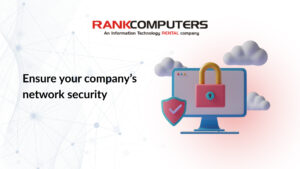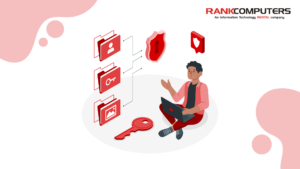We live in an era of technological advancement. The variety and functionality of available IT assets are immense. However, those IT assets do face a gradual reduction in value owing to obsolescence and wear.
📢 It is estimated that companies allocate 10-20% of their total IT budget to depreciation, based on the nature of their work. On average, computer hardware and software have a depreciation rate of 40%.
If you’re wondering why the percentage is so high, let’s take an instance that will most likely affect your business.
Did you know that Microsoft will end active support for Windows 10 in 2025? This means that you’ll still be able to use the software, but you’ll stop receiving any security updates. This could expose your system to hacks, viruses, and so on. Thus, making a switch to the latest Windows 11 would seem prudent. But not all computers are compatible with it. Additionally, such a switch could be very expensive.
In this age of rising depreciation costs, you should know that you are not completely powerless. Let’s go through some of the things that you could do to reduce IT depreciation costs for your company.
Elevate your tech budgeting
Budgeting is important. Only when you allocate the limited resources that your company has in the most efficient way possible will you get the best possible outcome. In terms of depreciation costs, the best possible outcome is to lower them as much as possible. If a lot of your IT budget is eaten up by depreciation, you would have less money to spend on other important IT needs. It gets worse – if any unplanned depreciation costs arise, your IT plans could take a serious hit.
This is why, when you plan your company’s IT procurements for the year, you need to ask yourself if you have properly taken technology depreciation planning into account.
Ask yourself these questions – What is the expected lifespan of the equipment you already have or are planning on buying? How often should you anticipate to having refresh cycles or changes in tech strategy?
Failing to consider all these is what leads to premature asset depreciation and unplanned tech upgrades. The good news is that they can be avoided. Following are some practices that can help:
Knowing the lifespan of your equipment
There has been a significant reduction in the lifespan of IT equipment over the years. Owing to their incompatibility with the latest technological trends, hardware and software solutions may need to be replaced at a much faster pace than before. We talked about this while discussing Microsoft’s withdrawal of active support for Windows 10 and the need to switch to Windows 11. This replacement or upgrade is important for enhancing the productivity and security of IT systems as per the industry’s highest standards. This has significantly increased IT depreciation costs.
A big chunk of IT depreciation comes from a heavy reliance on hardware. Physical IT infrastructure, like computers and servers, has a higher depreciation cost as compared to software, given the nature of technological advancements.
For instance, keeping in mind the rise of technologies like AI, IoT, Blockchain, and so on, a company’s depreciation planning should take into consideration the requirement of replacing or upgrading existing equipment and discarding outdated ones when newer versions of these technologies arrive.
Ensure that the utility provided is proportional to the investment
📢 On average, the useful life of servers is 3 to 5 years, while for desktop computers and laptops, it is 3 to 4 years.
Given the huge amount of money your company must have spent on procuring its existing IT assets, they are probably not changed every 3-4 years, even though their usefulness has most probably decreased.
Even so, while investing in IT assets, decisions should be made based on compatibility with the latest, essential technologies in terms of hardware and software, ensuring that the value they provide in terms of utility over the years is proportionate to the money you will spend on buying and maintaining them. This is essential to reducing your organisation’s depreciation costs.
Understand how to efficiently utilise your assets
It often happens that there is less than efficient utilisation of IT assets within a company. Also, older assets might not be discarded as promptly as they should. This is a result of inefficient asset monitoring.
Doing away with outdated equipment and fixing issues that hinder productivity is important, as these drain money while also draining output. When this happens, the depreciation cost often exceeds the value that the asset is providing to the company.
This is why it is a good idea to create and maintain an inventory of all the IT assets that your company has, from hardware to software to licences. Include details about the efficient usage, configuration, and lifespan of each. In the event of any additions or upgrades, make sure to update your inventory.
Use a robust asset monitoring system
Once your inventory is ready, you can put in a robust tracking system that helps you monitor the lifecycle of these assets, including any changes in their configuration and their maintenance history.
Monitoring the health, usage, and performance of your IT assets helps in identify existing inefficiencies and potential issues. Understanding these will help in planning effective resolution of issues that will reduce your company’s IT depreciation costs and help ensure that there is optimal utilisation of your IT budget.
Reduce costs through asset flexibility
Consider shifting to cloud services for software flexibility
One solution is shifting to cloud services to reduce depreciation costs by allocating some of the IT budget to subscription-based models.
Although it certainly helps reduce depreciation costs, this alone, however, does not eliminate them, as there is still some reliance on owned physical assets that depreciate. It only provides you with limited flexibility and limited savings in terms of IT depreciation costs.
As we discussed above, the IT depreciation cost for hardware, on average, exceeds that of software.
Eliminate depreciation costs by total asset flexibility
The most effective way of eliminating depreciation costs is to have a completely flexible IT infrastructure, i.e., both hardware and software. This flexibility allows you to benefit from the latest IT assets while removing the hassle of committing to them by investing a substantial chunk of your IT budget.
In case there is a new technology that you think better aligns with your company’s goals and tech strategy, rentals allow you to make a painless switch!
Go depreciation-free with rentals
Renting IT equipment is what brings about flexibility in a company’s IT infrastructure. For a multitude of reasons, renting is often a more economically feasible option than buying IT equipment.
Your company would save entirely on depreciation costs for the rented equipment, as maintenance, upgrades, and replacements would be the responsibility of the rental company.
For example, companies with rented equipment that is incompatible with Windows 11 have nothing to worry about ,as a switch to it would not incur a loss or a hefty investment.
With a rental company like Rank Computers, you would not need to worry about outdated hardware or software hampering your company’s productivity. We ensure that our rentals are up-to-date and have the best tech to meet your IT needs without having to commit heavily in terms of finances. When the next best thing in terms of technology comes up, the switch will be easy and cheap.
If you have questions about how IT rentals can benefit your business, get in touch with us!



